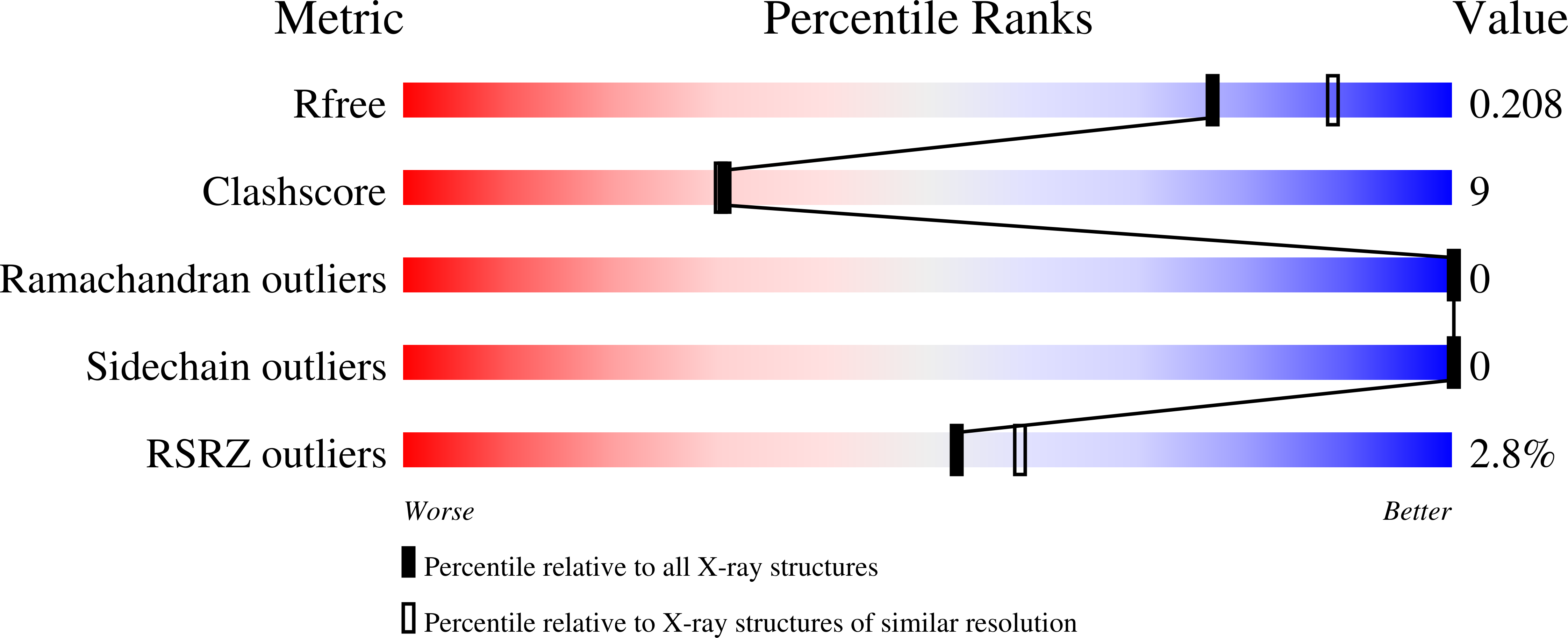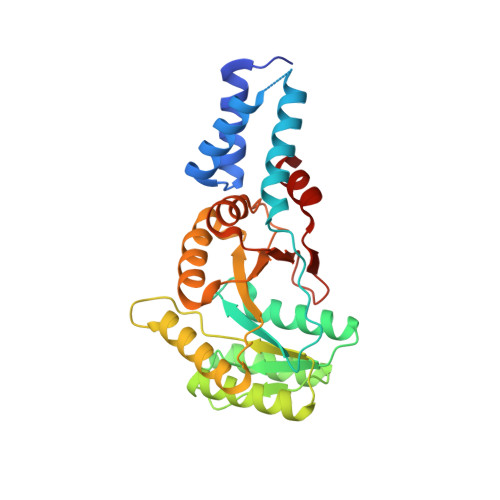Co-translational Folding Intermediate Dictates Membrane Targeting of the Signal Recognition Particle Receptor.
Karniel, A., Mrusek, D., Steinchen, W., Dym, O., Bange, G., Bibi, E.(2018) J Mol Biol 430: 1607-1620
- PubMed: 29704493
- DOI: https://doi.org/10.1016/j.jmb.2018.04.017
- Primary Citation of Related Structures:
6FPK, 6FPR, 6FQD - PubMed Abstract:
Much of our knowledge on the function of proteins is deduced from their mature, folded states. However, it is unknown whether partially synthesized nascent protein segments can execute biological functions during translation and whether their premature folding states matter. A recent observation that a nascent chain performs a distinct function, co-translational targeting in vivo, has been made with the Escherichia coli signal recognition particle receptor FtsY, a major player in the conserved pathway of membrane protein biogenesis. FtsY functions as a membrane-associated entity, but very little is known about the mode of its targeting to the membrane. Here we investigated the underlying structural mechanism of the co-translational FtsY targeting to the membrane. Our results show that helices N 2-4 , which mediate membrane targeting, form a stable folding intermediate co-translationally that greatly differs from its fold in the mature FtsY. These results thus resolve a long-standing mystery of how the receptor targets the membrane even when deleted of its alleged membrane targeting sequence. The structurally distinct targeting determinant of FtsY exists only co-translationally. Our studies will facilitate further efforts to seek cellular factors required for proper targeting and association of FtsY with the membrane. Moreover, the results offer a hallmark example for how co-translational nascent intermediates may dictate biological functions.
Organizational Affiliation:
Department of Biomolecular Sciences, Weizmann Institute of Science, Rehovot 7610001, Israel.
















